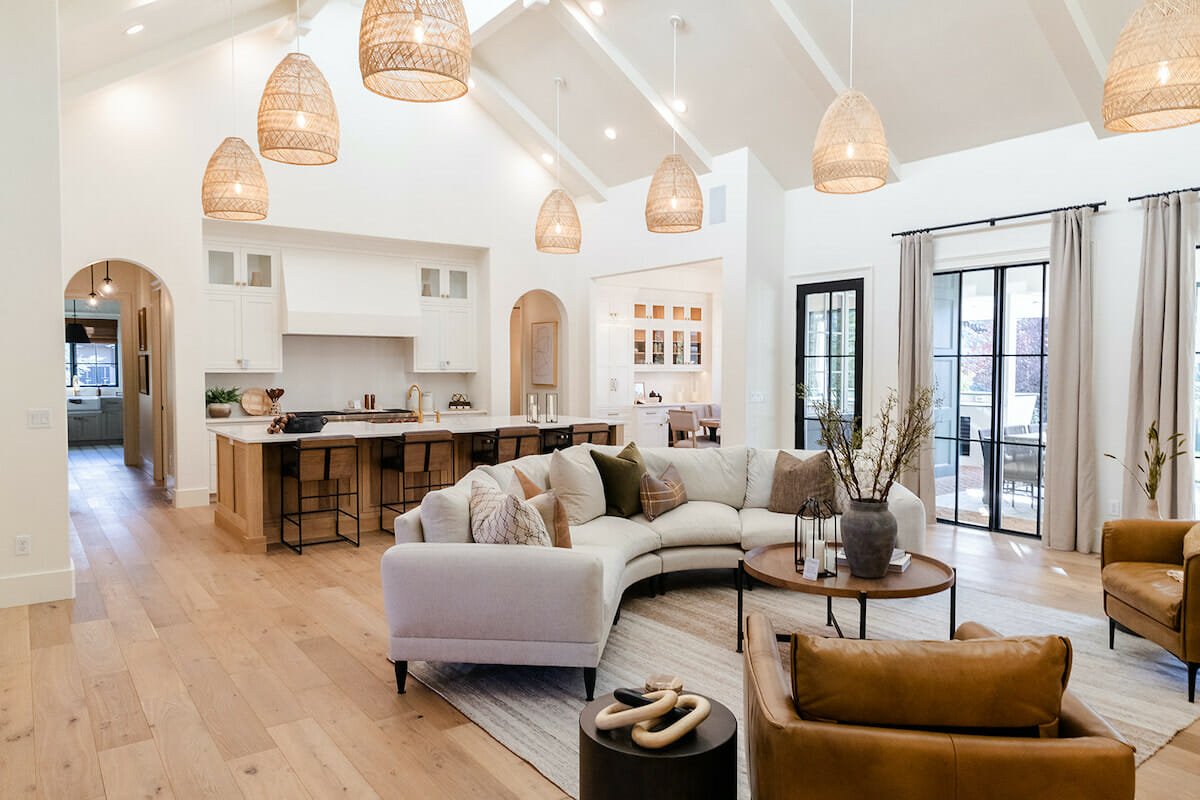California interior design has a way of blending effortless sophistication with relaxed charm. From sunlit spaces to airy layouts, the style embodies a balance of modernity and casual comfort. Homeowners across the country are increasingly drawn to this aesthetic, especially the California casual interior design approach that emphasizes ease without sacrificing style. However, embracing this style comes with potential pitfalls that can compromise the look and feel of your home. Understanding common mistakes and how to avoid them is key to achieving a space that feels authentic, inviting, and uniquely Californian.
Misunderstanding the Core of California Interior Design
One of the biggest mistakes homeowners make is misunderstanding what California interior design truly represents. While the style is often associated with neutral colors, coastal vibes, and natural textures, it’s not merely about mimicking beach houses or adding trendy décor items. True California interior design is about creating spaces that are light, comfortable, and harmonious with the environment. Overloading a room with overly polished or formal pieces can undermine the relaxed yet sophisticated essence of the style.
Ignoring Natural Light
A hallmark of California interior design is the use of natural light to enhance spaces. Many people overlook the importance of window placement, curtain choices, and furniture arrangement in maximizing sunlight. Dark, heavy drapes or bulky furniture blocking windows can make even the most beautifully designed room feel closed off. Opt for sheer fabrics, reflective surfaces, and open layouts to let light flow freely, which amplifies the airy and casual vibes characteristic of California casual interior design.
Overcomplicating the Color Palette
California interior design thrives on simplicity, particularly when it comes to colors. A common mistake is using too many bold colors that clash or overpower the natural aesthetic. While pops of color can enhance a space, overuse can detract from the understated elegance central to the style. Neutrals, soft blues, muted greens, and earthy tones are staples, providing a calming backdrop that emphasizes natural textures and sunlit environments. The key is subtlety, layering shades that feel harmonious rather than forced.
Neglecting Texture and Material
Another misstep is failing to incorporate varied textures and materials. California casual interior design thrives on tactile richness that adds depth to minimalist spaces. Smooth surfaces alone can feel cold and uninviting. Consider combining materials such as linen, rattan, reclaimed wood, and stone. These elements introduce warmth and character while maintaining a cohesive and breezy atmosphere. Balancing textures ensures the space feels curated yet approachable, reflecting the casual California lifestyle.
Cluttering Spaces with Too Much Furniture
While it might be tempting to fill every corner with furniture and décor, over-cluttering disrupts the open and relaxed feel of California interior design. This style celebrates spaciousness and encourages breathing room for both people and light. Prioritize quality over quantity, choosing multifunctional or statement pieces that anchor a room without overwhelming it. Minimalist layouts allow each element to shine, creating an environment that is both stylish and comfortable.
Forgetting the Indoor-Outdoor Connection
California interior design often blurs the line between indoor and outdoor living. Failing to integrate this connection can leave spaces feeling disconnected or artificial. Whether it’s large sliding doors, expansive patios, or plant arrangements that extend indoors, the seamless transition between interior and exterior spaces is essential. Incorporating natural elements and greenery within your home reinforces the casual, sun-soaked feel that defines California casual interior design.
Overlooking Functional Design
A beautiful space is only as good as its functionality. Many homeowners focus solely on aesthetics, neglecting practical considerations such as storage, seating, or traffic flow. California interior design prioritizes comfort and usability, with spaces designed for living as much as for looking good. Incorporate built-in storage, versatile furniture, and logical layouts to ensure your home feels effortless to live in while retaining its stylish appeal.
Disregarding Personal Style
Another common error is blindly following trends without considering your personal taste. While California interior design provides a framework, forcing a style that doesn’t reflect your personality can make a space feel inauthentic. Blend the principles of California casual interior design with your preferences in color, art, and décor. Personal touches ensure the space feels inviting and unique rather than resembling a staged model home.
Mismanaging Lighting Choices
While natural light is central, artificial lighting is equally important to maintain ambiance after sunset. Overly harsh overhead lights or mismatched fixtures can disrupt the effortless flow of a California-inspired space. Layer your lighting with a mix of soft ambient lighting, task lighting for work areas, and accent lights to highlight architectural features or artwork. Thoughtful lighting reinforces the warmth and relaxed vibe integral to California interior design.
Ignoring Sustainability
Modern California interior design often incorporates eco-friendly practices and sustainable materials. Ignoring this aspect can compromise both the authenticity of the style and the environmental impact of your home. Opt for responsibly sourced materials, energy-efficient lighting, and durable finishes that age gracefully. Sustainability aligns with the California lifestyle’s connection to nature and mindful living, enhancing both style and functionality.
Avoiding the Pitfalls of Over-Decorating
Finally, over-decorating can be detrimental. California casual interior design is about balance and restraint. Too many accessories, trinkets, or artwork can clutter the eye and distract from the serene, breezy feel. Instead, curate items that have meaning or provide texture, color, or functionality. Negative space is just as important as what fills the room, allowing the home to breathe and feel relaxed.
Conclusion
California interior design and its casual variant are about effortless elegance, comfort, and harmony with the environment. Avoiding these common mistakes—from misusing light and color to over-cluttering or ignoring functionality—ensures a space that is welcoming, stylish, and authentically Californian. By focusing on natural materials, thoughtful layouts, and personal touches, homeowners can create interiors that are both beautiful and practical, embodying the relaxed sophistication that has made California casual interior design a timeless favorite.
Embracing these principles allows any home to capture the essence of California living, providing a serene, inviting atmosphere that balances style with comfort. Whether renovating a single room or designing an entire house, keeping these insights in mind ensures a home that feels as bright, open, and inspiring as the California lifestyle itself.







